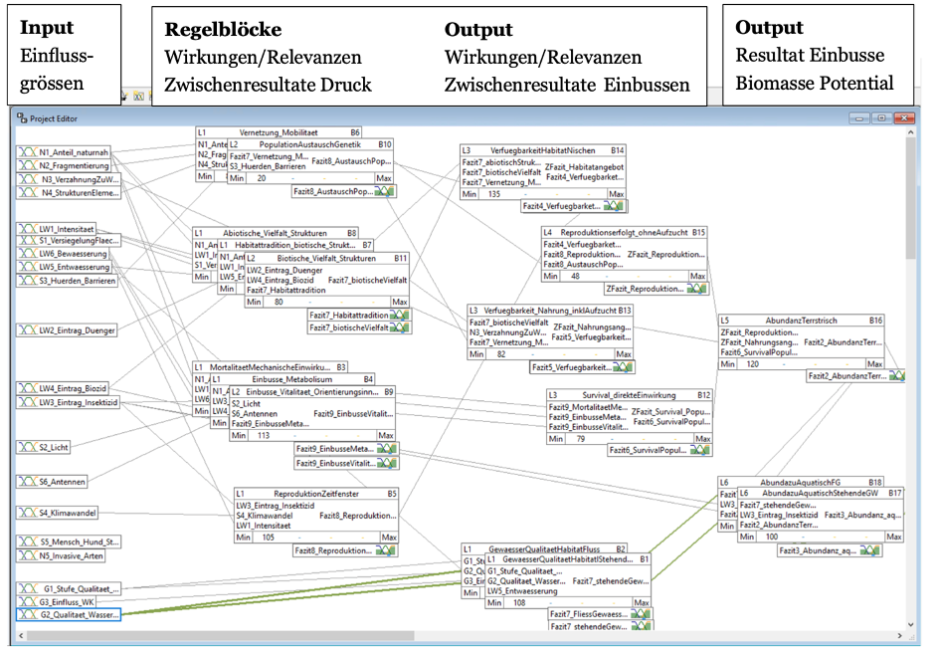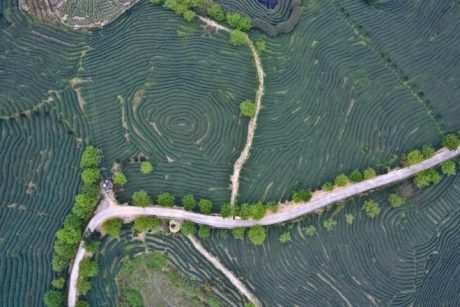Client: Federal Office for the Environment, Biodiversity and Landscape Division
Project team: Cornelia Stettler, Flora Conte, Gavin Roberts
Services provided: Fuzzy set, system modelling, GIS
Year: 2021
Insect mortality is a serious issue. To assess the situation in Switzerland, Carbotech was commissioned by the FOEN to model changes in insect biomass over the last 30 years.

A study published in Krefeld DE in 2017 showed that the biomass of flying insects in Germany decreased by 75% between 1989 and 2016. This result has caused an uproar in the entomological world and also boosted the overall societal debate around insect mortality. In Switzerland, such long-term studies on the development of the insect population are lacking. The Federal Office for the Environment therefore commissioned Carbotech to use modelling to create an overall picture of the loss of insect biomass over the last 30 years in Switzerland.

Factors influencing the development of insect biomass were identified by means of literature research and GIS analysis. By comparing GIS maps from different years, changes in vegetation, infrastructure and land use were identified. In a next step, the relevance of the influencing factors was assessed by means of interviews with experts.
An assessment of the overall situation of the development of the insect biomass is difficult even for insect specialists with many years of experience. Only rarely are observations and surveys based on the biomass as a whole. In order to be able to mathematically calculate the existing expert knowledge and represent it in a model, the fuzzy set theory was used for this study.

Furthermore, test evaluations and field observations were carried out in predefined pilot regions and the results were incorporated into the model. This was further adjusted, tested and refined until the situation and correlations in the pilot regions were satisfactorily represented. The data obtained in this way was then combined with geodata for analysis and presentation. The result was a map of Switzerland showing the pressure on insect biomass in the years 1990-2020. The scaling over the loss of biomass was done in comparison to the potential maximum insect biomass under particularly favourable conditions.

Results
A decrease in insect biomass can be observed particularly in central Switzerland in agricultural areas and meadows. This is due to the intensification of the cultivation of agricultural and meadow areas, which has been increasing in Switzerland since before 1990. The further development of agricultural machinery also makes it possible to cultivate previously unused areas that served as habitats for insects. A large part of the loss of insect biomass could therefore have already occurred before 1990.
In mountain areas, too, the intensification of meadow use has a negative impact on insects. However, a positive trend can be observed due to changing climatic conditions, which allow insects in mountain areas to open up new habitats. An upward trend can also be observed in aquatic areas. Thanks to renaturation and better water management, more habitats for aquatic insects are available again. Developments in the forest are relatively stable. These trends can vary greatly at the local level – depending on the measures taken and adjustments in management.

The results of the study are not quite as precarious as those of the Krefeld study – the determined decrease in insect biomass is considerably lower. However, the studies are also only comparable to a limited extent.
Further information
The full report can be downloaded here (german only).



